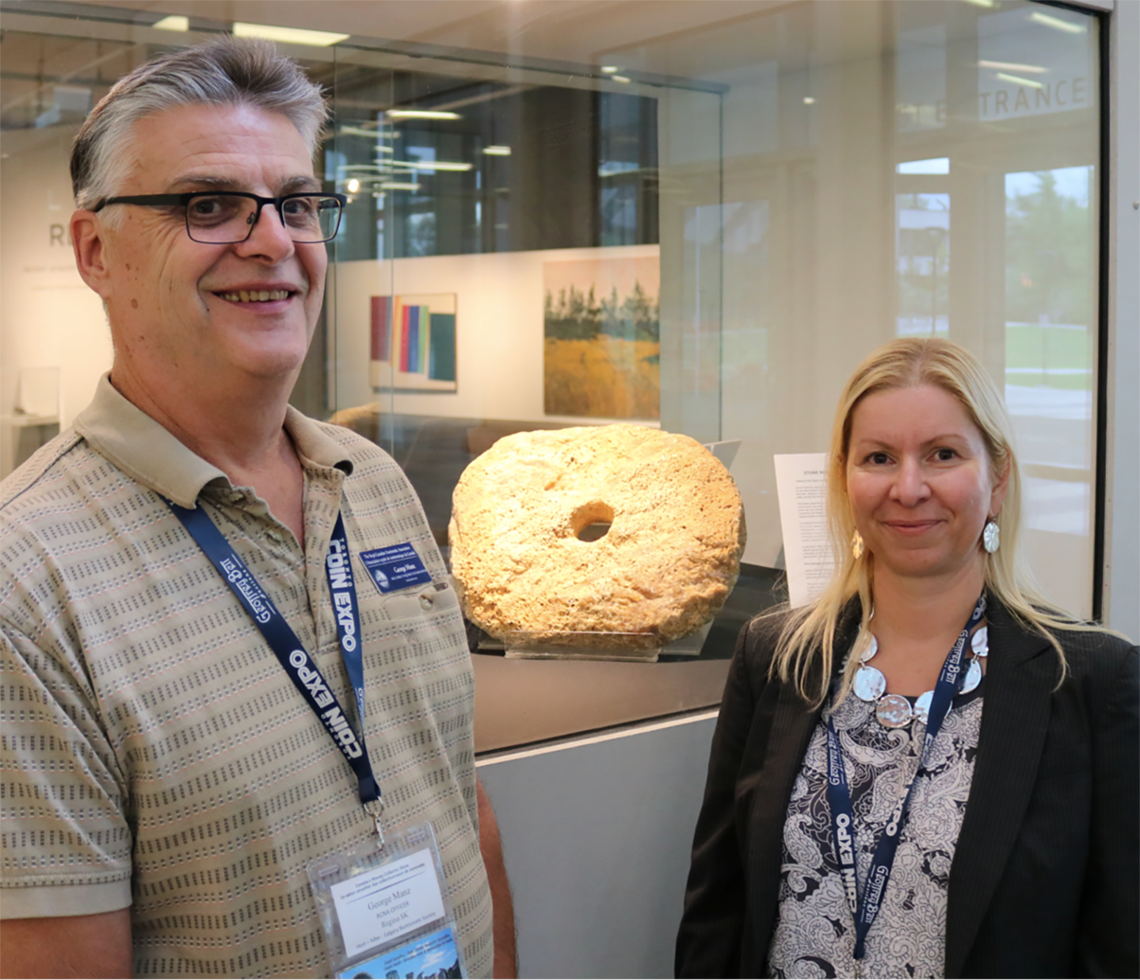Sept. 16, 2019
How ancient stones worked like cryptocurrency

Donor George Manz and numismatic collection specialist Marina Fischer with the stone money artifact.
Jesse Robitaille, Canadian Stamp News
Bitcoin and other cryptocurrencies that use Blockchain technology may seem like new puzzling concepts, but their central tenet goes back to ancient stone money from the Island of Yap.
In July 2019, one of these rare stones was donated to the numismatic collection of Nickle Galleries by George Manz, a fellow of the Royal Canadian Numismatic Association, president of the Regina Coin Club, and a longtime donor. There are only two stones in Canada — one in the collections of the Bank of Canada Museum and the other one now at the University of Calgary.
The stone has an incredible story to tell. Organic materials were primarily used as currency across Oceania prior to European colonization, and, uniquely, Micronesian Island of Yap used large carved stones, called rai. The stones could be up to four metres in diameter and possibly going back to 500 CE. They are still used today among the islanders.
The stones originated on the Palau islands where they were mined, then transported back to Yap in small canoes and rafts crossing 400 kilometres of ocean during these daring journeys. The value of the stone was not related to its size but rather to its oral history, memorized by the village chief and tracked by the villagers. Due to this custom, there were no thefts of the stones, which were mostly placed outside of private homes or lined up along the village streets forming the official village bank.
It is believed that Yap stones were the inspiration for bitcoin and other cryptocurrencies. Both forms of currency depend upon a public, community ledger system that provides transparency about transactions, as well as security, and all without needing a centralized bank structure.
In bitcoin, that public ledger is called the blockchain, which is an open record of bitcoin ownership and transactions spread across multiple computers on the internet. This model is identical to the rai’s oral history that gives stone money its value. In 1965, Yapese law prohibited the removal of the stone money from the island without official approval by the Yapese government.
In addition to the stone, the Numismatic Collection contains over 300 objects of ethnographic or pre-coinage currency. This collection — Canada’s foremost — was made possible by George Manz’s generous donations.
“During the last year, Nickle Galleries has benefited from several generous donations in support of the Numismatic Collection,” says Craig Melton, associate director of development for Libraries and Cultural Resources. “We are very grateful to these donors who seek to spark discovery through the building of extraordinary cultural collections like the Numismatic Collection.”
Melton adds that community investment in the numismatic collection provides opportunities for expanded programming including public lectures and community events, as well as increased access for student learning and research.
Join us for a special Nickle at Noon on Sept. 19 entitled Money before Money and explore here for more information on donating to Nickle Galleries.
Money before Money
- Thursday, Sept. 19, 2019
- Noon to 1 p.m.
- Gallery Hall, Taylor Family Digital Library
